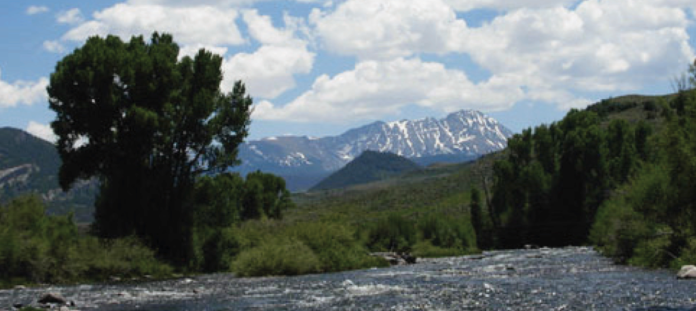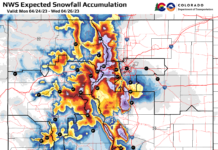by Marissa Lorenz
The Bureau of Land Management (BLM) announced the approval of the Blue Valley Land Exchange this week, bringing decision to a proposal first put forward in 2005 with the expressed goals of increasing public access for hunting, fishing, and other recreation activities and of promoting more effective natural resource management of public lands in Grand and Summit counties.
“This exchange improves and increases public access for people of all abilities who wish to boat-in, hike-in, or drive to the Blue River and increases public hunting access along Trough Road,” explained Kremmling Field Manager Bill Mills. “We’ve coordinated closely with local governments, other agencies and the public, and negotiated with the proponent to ensure that the land exchange benefits the public interest.”
Specifically, the approval means the BLM has agreed to exchange nine parcels of federal land comprising 1,489 acres for nine parcels totaling 1,832 acres of land from the privately-owned Blue Valley Ranch, located along the Blue River, south of the town of Kremmling.
“I am so happy and encouraged that this Land Exchange has been successful,” Grand County Commissioner Kristen Manguso responded to the decision. “This is a positive result for Grand County after years of negotiations and compromise between the BLM
and the Blue Valley Ranch.
“I am thrilled that this will provide a huge benefit for so many people, allowing fishing access for families and handicap individuals.
I appreciate everyone’s work and time in making this a successful project that will benefit the public.”
As described in the BLM press release, the exchange would “expand access along a mile of the Blue River near the confluence with the Colorado River, plus an additional 1.66 miles of hike-in access to river frontage that is currently inaccessible except by floating.
“Three hundred acres of the exchange that are within the boundaries of the White River National Forest would be transferred to the U.S. Forest Service. The exchange consolidates public land and transfers small, isolated public land parcels that mostly have little to no public access.”
The proposal has had long-time support from local governments, with commissioners from both counties lauding it as providing great public benefit.
Proponents point out that much of the public lands to be included in the exchange are land-locked, belonging to the public but with no way to access them as they are surrounded by the Ranch property and have no easement. The agreement would increase public access to federal lands and potentially boost recreational use.
They praise commitment from Blue Valley Ranch, owned by hedge-fund manager and billionaire Paul Tudor Jones II, to pay for infrastructure improvements, including creation of a seasonal take-out and rest stop at Spring Creek Road Bridge, establishment of a Green Mountain Canyon trailhead, and development of a recreation area near the Blue River’s confluence with the Colorado River.
Facilities at the proposed Confluence Recreation Area would consist of “a picnic area, walking trails, a take-out for river floaters, wheelchair-accessible fishing access, and significant fishery habitat enhancements,” according to Blue Valley Ranch’s website, as well as trails, restrooms, and parking areas.
But not all response to the proposal has been positive. Colorado Wild Public Lands (CWPL), an organization that dubs itself “a land exchange watchdog,” has critiqued the proposal, saying it “would privatize almost 15 miles of Blue River-front” and that “only a single public access would remain along this 15-mile stretch of the Blue River, a gold medal trout stream.”
And at least some recreators don’t find the proposal beneficial, as evidenced by a 2018 conversation thread on mountainbuzz.com,
an online forum “dedicated to whitewater kayaking, boating, and rafting enthusiasts.”
The discussion, initiated to encourage forum members to provide comment on the 2018 Draft Environmental Impact Statement, includes statements such as, “boaters will lose the very few pieces of public land available on this stretch to stop and have a break, to have lunch, or just stretch the legs,” “I encourage everyone and anyone to voice their opinion against,” and “this proposal is only meant to shore up [Blue Valley Ranch’s] river frontage for their personal use.”
That 2018 Draft Environmental Impact Statement is a 296-page document “prepared to analyze and disclose the effects to the human and biological environment anticipated to result from the proposed Blue Valley Land Exchange.” It provides detailed analysis of 26 resource issues of potential concern and/or benefit with the exchange of lands.
But the BLM seemed to delay in issuing a Final Environmental Impact Statement, a necessary document to support any decision on the proposition.
Now, with a decision made, that Final Environmental Impact Statement will be released with a Federal Register Notice on July2. All documents will be made available to the public, and the land exchange decision will be subject to a 45-day protest period and subsequent right to appeal.
For more information on the proposed land exchange, visit: the BLM website, including maps and environmental impact documents, at https://go.usa.gov/xnBJ5 the Blue Valley Ranch land exchange page at https://bluevalleyranch. com/land-exchange/ Colorado Wild Public Lands at http://coloradowildpubliclands.org/land-exchange-updates.html Or contact the BLM’s Kremmling Field Office at blm_co_kr_webmail@ blm.gov or (970) 724-3000.
St. Peter’s Catholic Church:









